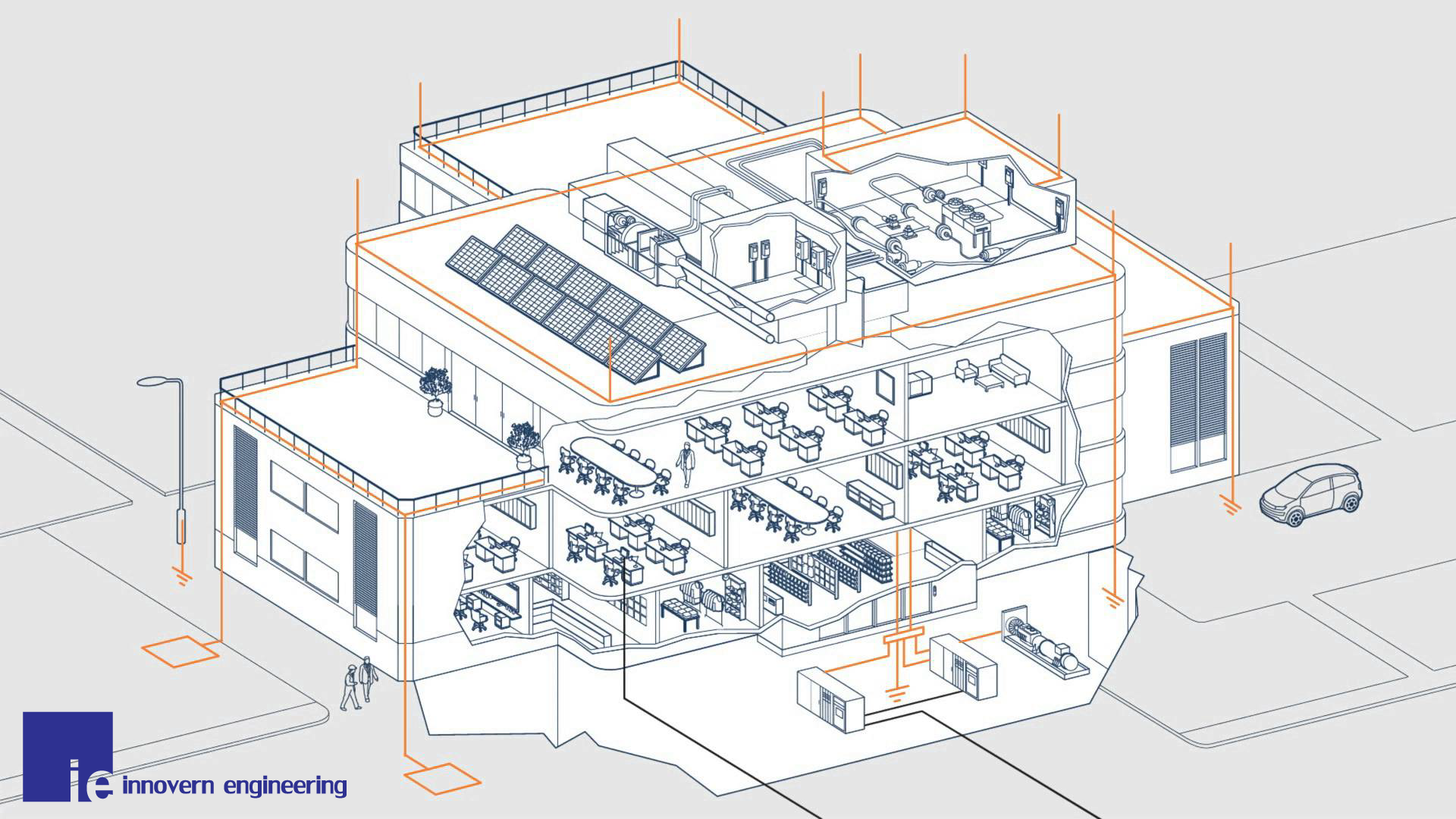Conventional Lightning Protection System
The conventional lightning protection system represents a time-tested approach to fortifying structures against the formidable forces of lightning strikes. Comprising a well-coordinated ensemble of components, this system is designed to efficiently intercept, channel, and disperse the powerful electrical currents associated with lightning, minimizing the potential for damage and harm.
At the heart of this system are air terminals, commonly known as lightning rods, strategically positioned at elevated points on the structure. These rods serve as sentinels, primed to intercept incoming lightning strikes and divert them safely towards the ground. The conductor cables, intricately connected to these air terminals, play a pivotal role in facilitating the smooth passage of the lightning current downwards, ensuring its efficient transmission to the grounding system.
The grounding system, a subterranean network of electrodes, forms the backbone of the conventional lightning protection setup. Buried within the earth, these electrodes provide a low-resistance pathway for the lightning current to dissipate harmlessly into the ground, averting potential damage to the structure and its occupants.
Augmenting this core trio of elements, surge protection devices stand guard over electrical and electronic equipment. These devices act as a line of defense, shielding against voltage transients induced by lightning strikes and safeguarding the delicate electronic infrastructure within the protected structure.
While the conventional lightning protection system stands as a robust and reliable shield against the caprices of lightning, it’s essential to acknowledge that no system can offer absolute immunity. Nonetheless, the diligent integration of these components significantly curtails the risk of damage, ensuring a fortified defense mechanism for structures in the face of nature’s electrical fury.





Leave a Reply